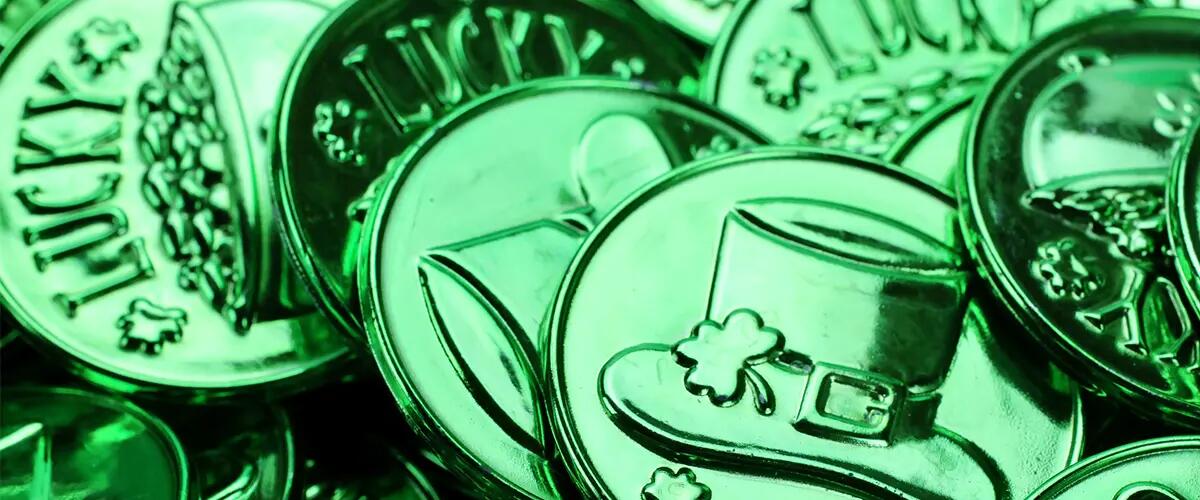
Webinar: Prof. Langdana's Macroeconomic Outlook for Spring 2023. Will President Biden have the “Luck of the Irish?”
Farrokh Langdana, professor of finance and economics, and director of the Rutgers Business School Executive MBA Program, discusses the historical events that led to inflation, the current economic outlook, and what the future may hold with a little luck in the Spring.
Langdana addressed a global audience of over 300 Rutgers Executive MBA alumni, current students, and other Rutgers Business School alumni to give his thoughts on the current state of the world economy, prior events leading to this point, and a look to the future. Even with such a heady topic, Langdana regularly demystifies economic trends in an accessible and engaging way.
Throughout the webinar, Langdana encouraged participants to use the chat feature to post questions. There were too many questions to answer during the webinar so he responded to each question in a follow up email, which you can see below in the full Q&A.
Originally aired February 4, 2023.
See more of Professor Langdana's blogs and articles, including his Fireside Chats, pertaining to current global fiscal and monetary policy analyses, click here.
Note: Questions & Comments = Bold; Langdana Answers = Regular Text
…Langdana: Inflation has come down from 9.5% in June 2022 to 6.5% (headline inflation) by January 2023.
Come down? Have you seen the price of eggs lately?
Please note that inflation is the rate of change in prices, not the absolute price level, per se.
For example, if eggs went from, say, from $3.00 a dozen and increased per week to $3.50, $4.20, $5.90, then the rate of weekly change in prices is increasing and inflation has gone up.
If eggs go from $5.20 a dozen to $5.45 the following week, and then $5.49, and then $5.50, then inflation is falling, and this is called disinflation if this happens across the board. Here prices are increasing but increasing by less and less. This is what we are talking about right now (2/4/23), and across-the-board.
If eggs go from say, $5.50 per dozen to $4.35 and then to $3.90, then this is weekly deflation. Across the board deflation is terrible as consumers then postpone purchases until “prices for durable goods drop further” and this in turn further exacerbates deflation as the aggregate demand shuts down.
Why only percentages for Ymax, etc.?
We live in a dynamic world. Just due to population growth (forget productivity and innovation) we should see growth. In addition, as we know, GDP (Y) and all the major indexes like CPI (Consumer Price Index) and so on, are replete with measurement errors and challenges. When we focus on growth, we subsume those same errors every period and hence we can distinguish what the actual changes are.
What do you think of the current Fed?
No issues. Jay Powell has done a fine job. I refuse to jump on the bandwagon that says, “The Fed should have acted earlier to soft-land.” How on earth was the Fed supposed to raise interest rates in an economy traumatized already by Covid?! Imagine what that would have done to C-bar (consumer confidence) and I-bar (planned investment)!
Is C-bar really endogenous? Look at the media’s attempt to spin C-bar based on political affiliation.
Yes, very good point. But one hopes that at the end of the day, we have the ability to judge if our “personal macro” is indeed getting better or worse, irrespective of the constant barrage of noise from the news….one can only hope.
What if the increase in G (government spending) dominates the decrease in M (money supply) and the increase in interest rates?
If the G is “good G” we should see the AD (aggregate demand) shifting to the right (increased demand). If the G increases productivity, then we could even see a rightward shift in the AS (aggregate supply) which would temper inflation too. Also, everyone please note that our “soft-landing” really was aimed at decreasing wages. The other metric for overheating – GDP growth near 7% for the US would be in-line with overheating – was conspicuously missing. So, while we have had a soft-landing we never really overheated in the conventional sense. In other words, we have room to grow.
Does the “food + fuel” indicator include eggs? And what’s with egg prices? Cost-push inflation?
The “food + fuel” is a convenient “catch all” for cost-push supply-side inflation. And yes eggs = food, so they are “in there.” With eggs, avian influenza is killing the chickens and there is a feed shortage too (possibly Ukraine?) – witness the supply curve for both being shoved to the left, which is nothing but cost-push inflation. Buy your eggs from Costco! 😊
What is the deficit right now?
I mentioned this in my talk. The federal budget deficit is around 5.5% of GDP and the debt/GDP ratio is falling too. When will we finance this? We do so every day. Bonds from the past come due every day. As long as the debt/GDP ratio keeps falling, we should be fine in the case of US bond-financed deficits. This comment mainly applies to the U.S..
What about yield curve inversion?
Also discussed in my talk. The inversion is consistent with a slowing economy which is what a soft landing is.
The Russian invasion of Ukraine was a bigger shock than most anticipated. What about a Chinese invasion of Taiwan?
This is still a very remote possibility, but this is my personal opinion. Keep in mind that 65% of all the money China has made since they famously opened their economy to global trade in 1979 is parked in US$. They will never do anything to jeopardize that, irrespective of the rhetoric. Even right now (2/3/2023), trade between the US and China is at a record high. Seriously. Follow the money and not the headlines.
How will the participation rate go up when dozens of companies are laying off workers?
The two are not connected. Participation rate going up means that individuals who are outside the civilian labor force will now decide to pop back in and look for work. This will ease wage pressure. Just today (2/3/23), we had a massive increase in job growth. Do not confuse job losses in company XYZ with the whole economy. Especially this gigantic economy we have.
Where is Lithium (Li) and Nickel (Ni) going to come from?
My point exactly! I said that the Li story was over. As was the Ni story. China has been busy while we were dealing with our political shenanigans. I mentioned percentages already owned by China. My point was that endogenously we hope we will come up with the next source…Magnesium (Mg) is also gone – China.
The Aussies have an Aluminum battery that charges 60 times faster than a Li battery……maybe the next big thing is NOT a post-Li battery, and maybe not even EVs! Maybe fossil fuels are really here to stay, and maybe it is a more efficient fossil fuel engine that we need? Keep in mind that all EVs need government subsidies. The EV world cannot stand on its own two feet. It is not endogenously viable without massive subsidies. This is a very important point. Are we chasing down the wrong goal? Is it a fad?
Again, thank you all for attending and for these great questions. C-bar up. So much macro, so little time.
Welcome to the Powerhouse!
About Professor Farrokh Langdana
Dr. Langdana's areas of expertise include global monetary and fiscal policy analysis. Langdana has published several articles and five books and has won over 30 teaching awards, including the Warren I. Susman Award, Rutgers University's Highest teaching award. In addition to the U.S., Langdana has taught extensively in China, Singapore, France, Iceland, and India. Langdana was recently awarded the RBS Dean's Meritorious Service Award and acclaimed as RBS Dean's Professor of Business.
Press: For all media inquiries see our Media Kit



